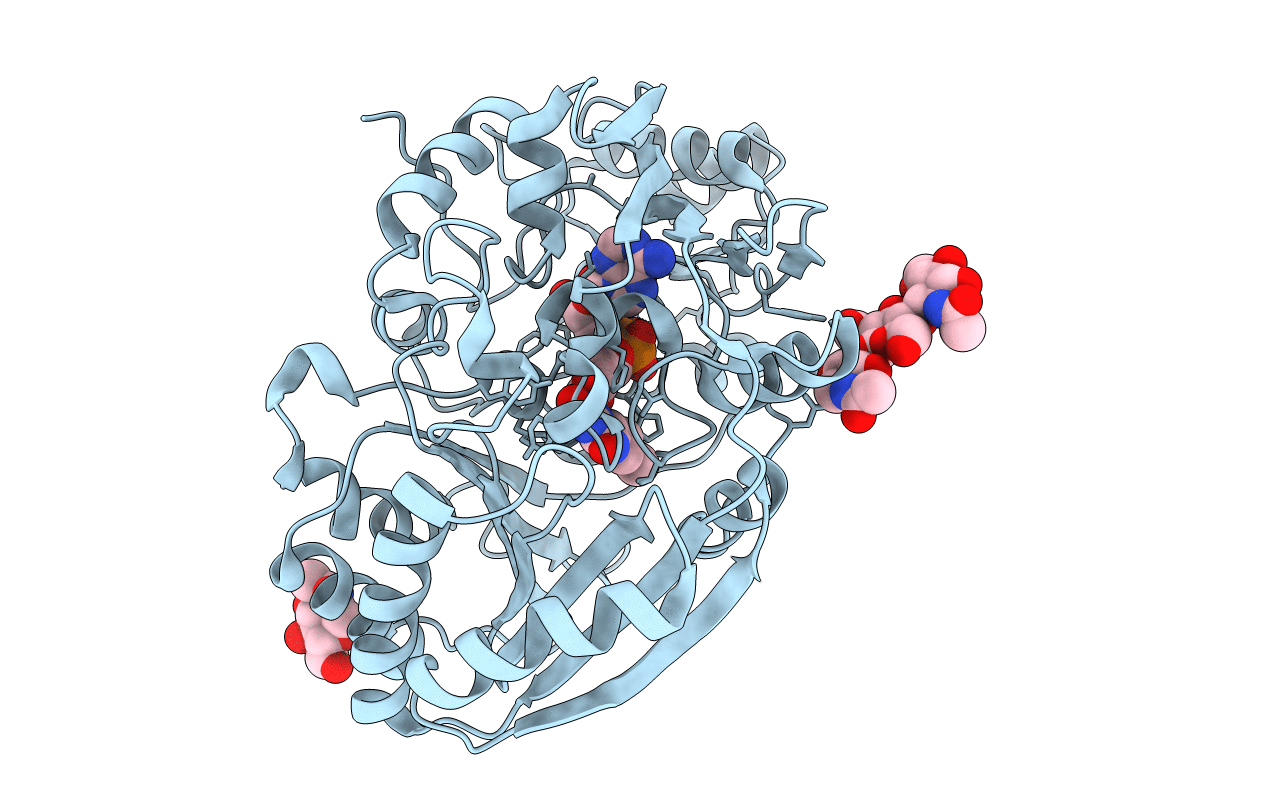
Deposition Date
2009-06-10
Release Date
2009-06-30
Last Version Date
2024-11-06
Entry Detail
PDB ID:
3HSU
Keywords:
Title:
Functional roles of the 6-s-cysteinyl, 8 alpha-N1-histidyl FAD in Glucooligosaccharide Oxidase from Acremonium strictum
Biological Source:
Source Organism:
Acremonium strictum (Taxon ID: 5046)
Host Organism:
Method Details:
Experimental Method:
Resolution:
1.69 Å
R-Value Free:
0.22
R-Value Work:
0.19
R-Value Observed:
0.19
Space Group:
P 21 21 21


